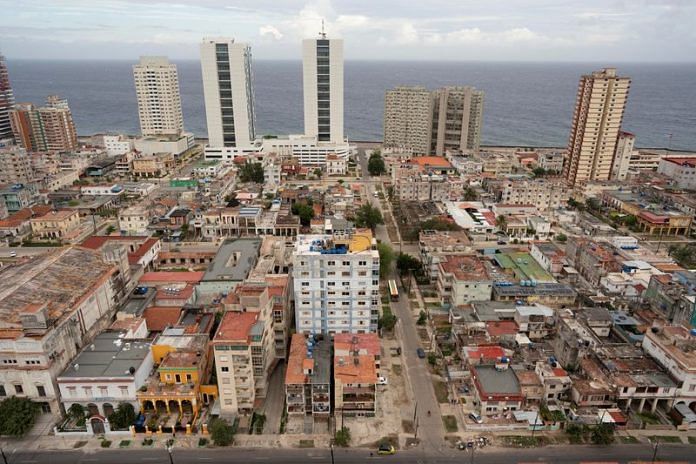By Dave Sherwood and Nelson Acosta
HAVANA (Reuters) -Hurricane Rafael began lashing Cuba’s south shore as a Category 3 cyclone shortly after noon on Wednesday, the U.S. National Hurricane Center said, packing sustained winds of 115 mph (185 kph) and forcing widespread evacuations of tourists and residents.
The hurricane was located about 85 miles (135 km) south of Cuba’s capital Havana at 1 p.m., and just to the east of Cuba’s Isle of Youth.
The Miami-based NHC warned of a “life-threatening storm surge, damaging hurricane-force winds and flash flooding” across much of western Cuba. The entire region was under a hurricane warning.
The farm provinces of Artemisa and Pinar del Rio were expected to take a near direct hit as Rafael made landfall on the Caribbean island.
Forecasters said Havana would also see tropical storm force winds and heavy rain before nightfall.
The capital city of 2 million residents is especially vulnerable to a hurricane strike and flooding, with antiquated, densely packed housing and decrepit infrastructure.
Residents formed lines at state-run shops early in the morning, but otherwise, the streets were largely quiet as the electricity began to flicker out across the city shortly after midday.
Schools and public transportation in the city were suspended until further notice.
Police cruisers with loudspeakers began circling central neighborhoods encouraging people to shelter in place ahead of the storm.
Authorities said they had grounded flights at both Havana’s Jose Marti International Airport as well as at the popular beach resort at Varadero through Thursday.
Officials said they had evacuated more than 100 Canadian tourists from Cayo Largo, another popular beach destination off southwestern Cuba.
Farmers fast-tracked the harvest of ripening fruits and vegetables across much of western Cuba and moved to protect 8,000 tonnes of tobacco in Pinar del Rio province, the country’s agriculture minister said.
The timing could not be worse for the Communist-run island, which last month suffered a total collapse of its national electric grid, leaving an estimated 10 million people without power for several days.
Hurricane Oscar made landfall in far eastern Cuba around the same time as the blackout, throwing a one-two punch that has sapped precious resources in a country suffering from severe shortages of food, fuel and medicine.
Continuing rolling blackouts, crippled communications and fuel shortfalls have complicated the government’s efforts to prepare residents for the storm.
Rafael grazed the Cayman Islands as a Category 1 hurricane overnight before increasing in less than 24 hours to a much more powerful Category 3 storm off Cuba’s southwestern shore.
Forecasters predict Rafael will spin off towards the western Gulf of Mexico later this week, though the track remains uncertain, the NHC said.
(Reporting by Dave Sherwood in Havana, additional reporting by Nelson Acosta,Editing by Christina Fincher, Marguerita Choy and Sandra Maler)
Disclaimer: This report is auto generated from the Reuters news service. ThePrint holds no responsibilty for its content.



